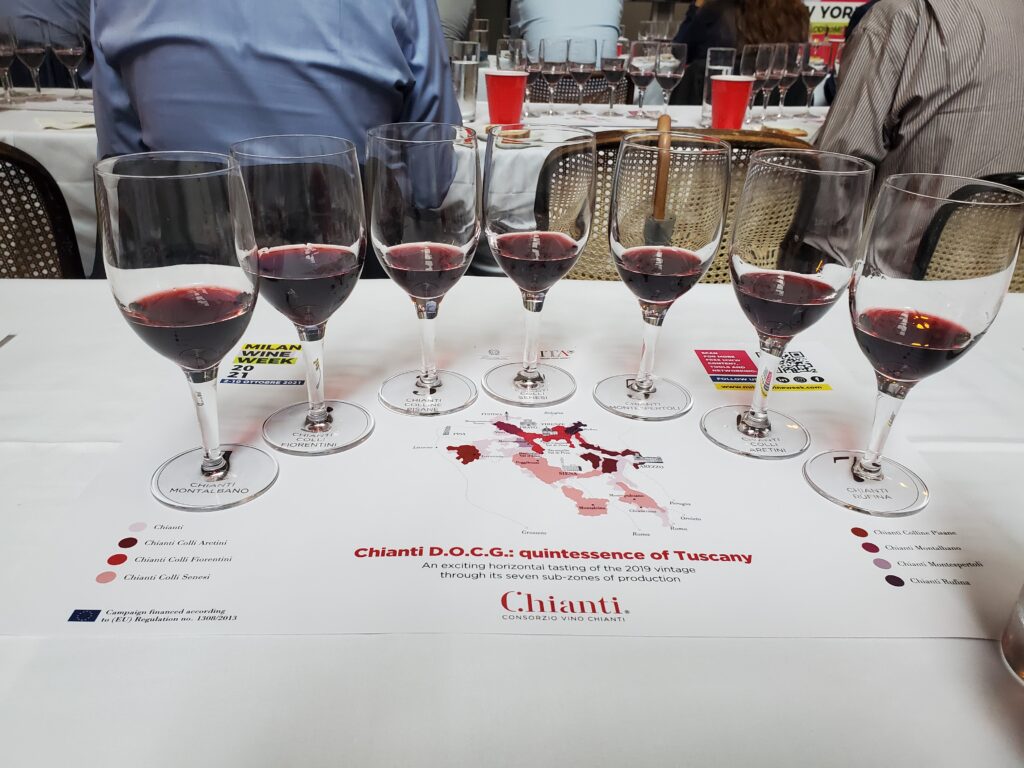
I was excited to be invited to Milano Wine Week 2021 NYC last October. After months of virtual events and Zoom calls while under quarantine due to the COVID pandemic, it felt good to attend an in-person event, see a few familiar faces and make a few new contacts. COVID restrictions and all, Allison Levine of Please the Palate brought together a small but diverse and passionate group of professionals representing a cross-section of the food and wine industry in the NY tri-state area. I was unable to attend all the seminars, but the ones I attended were quite memorable. Technology enabled through the “Digital Wine Fair” platform, brought together industry professionals in 11 international cities in 7 key markets for Italian wine exports. There was a virtual and in-person component to several of the tastings which were broadcast live from Milan in Italian with English translators. The speakers were quite knowledgeable with excellent representation of winemakers overseeing a number of grape varieties, terroir and winemaking techniques. The team of hosts in NYC, led by Gianfranco Sorrentino, at Il Gattapardo Restaurant in midtown Manhattan were consummate professionals, keeping us fed with healthy, delicious food and beverages throughout the day.
Monday, October 4th
Consorzio Vino Chianti (Blind Wine Tasting)
Chianti is a region of central Tuscany; it is also a wine made primarily from the Sangiovese grape and one of my favorite red wines. The tart red fruit, purity and earthiness of Sangiovese is very food-friendly and seductive, luring you in for more as it slowly opens and unfolds. In my opinion, the “terroir” (otherwise known as a sense of place) in these wines gives them soul. Although Sangiovese is the predominant grape of Tuscany, Chianti classifications can be somewhat difficult to understand. The wine region originally designated as Chianti in 1716 was divided into seven sub-regions in 1932: Classico, Colli Aretini, Colli Fiorentini, Collini Pisane, Colli Senesi, Montalbano and Rufina. Chianti Classico is the largest subregion, and wines from this region are the only wines that can display the black rooster seal on the neck of the bottle indicating that the producer of the wine is a member of the Chianti Classico Consortium.
Below are a few of my impressions of Chianti from the 7 sub-regions poured during a “horizontal tasting” of the 2019 vintage on the first day of Milano Wine Week 2021.
Chianti Montalbano- ruby red color, cherries, raspberry, plum, medium-bodied, lots of acidity
Chianti Colli Fiorentini – Tart cherry, more full bodied than previous, long finish, bright ruby red color, slightly more ripe and round, more juicy and intense than previous, good acidity but more in balance with the fruit of the wine. Stainless steel fermented.
Chianti Colline Pisane – oak-fermentation perceived in palate texture, balsamic notes on the nose, muscular, riper darker fruit
Chianti Colli Senesi – darker ruby fruit, silt, clay soils
Tuesday, October 5th
Consorzio dell’Asti e Moscato d’Asti DOCG
The Conzorzio dell’Asti e Moscato d’Asti DOCG wines opened my mind to a new level of Moscato (made from the Muscat grape). Contrary to the stereotype of Moscato being a sweet sticky wine, several of these wines were surprisingly complex with remarkable acidity and a long crisp finish! A few of my faves:
Fratelli Martini Secondo Luigi SPA – Asti Spumante
Cantina Sociale de Vinchio Vaglio Serra – Moscato d’Asti
Cantina di Alice Bel Colle – Moscato d’Asti
Tenuta Il Fachetto – Moscato d’Asti
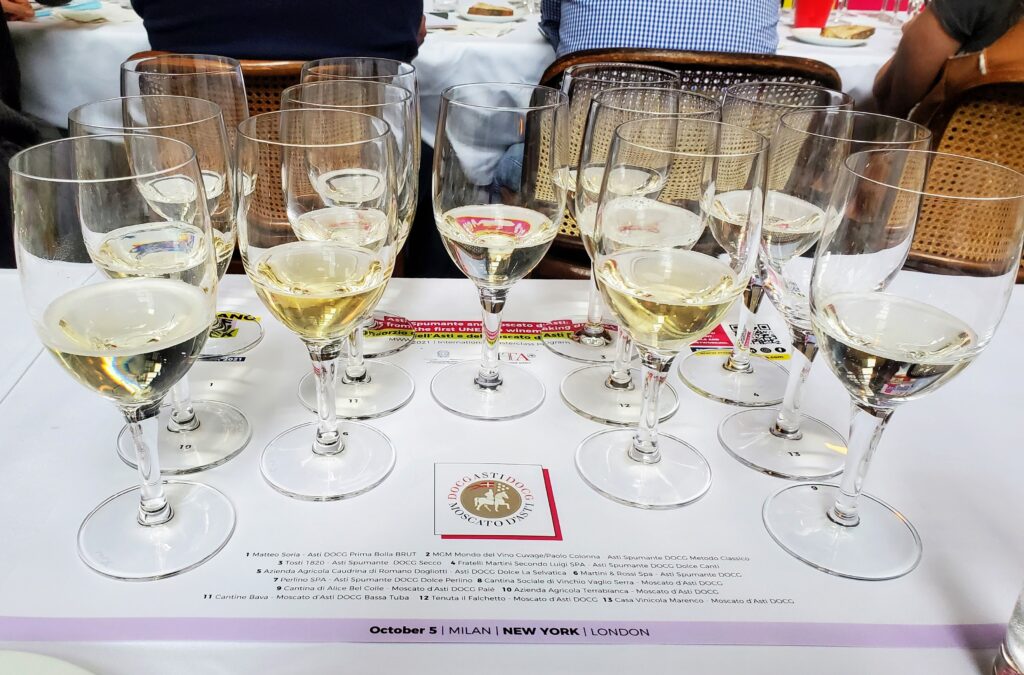
In addition to being delightful to sip before, during or after a meal – I love Moscato with breakfast and brunch – these wines are also great for making sorbets or granitas. Given their low alcohol levels, they freeze well, and their high acidity makes them excellent palate cleansers.
Bortolomiol – Prosecco Superiore DOCG
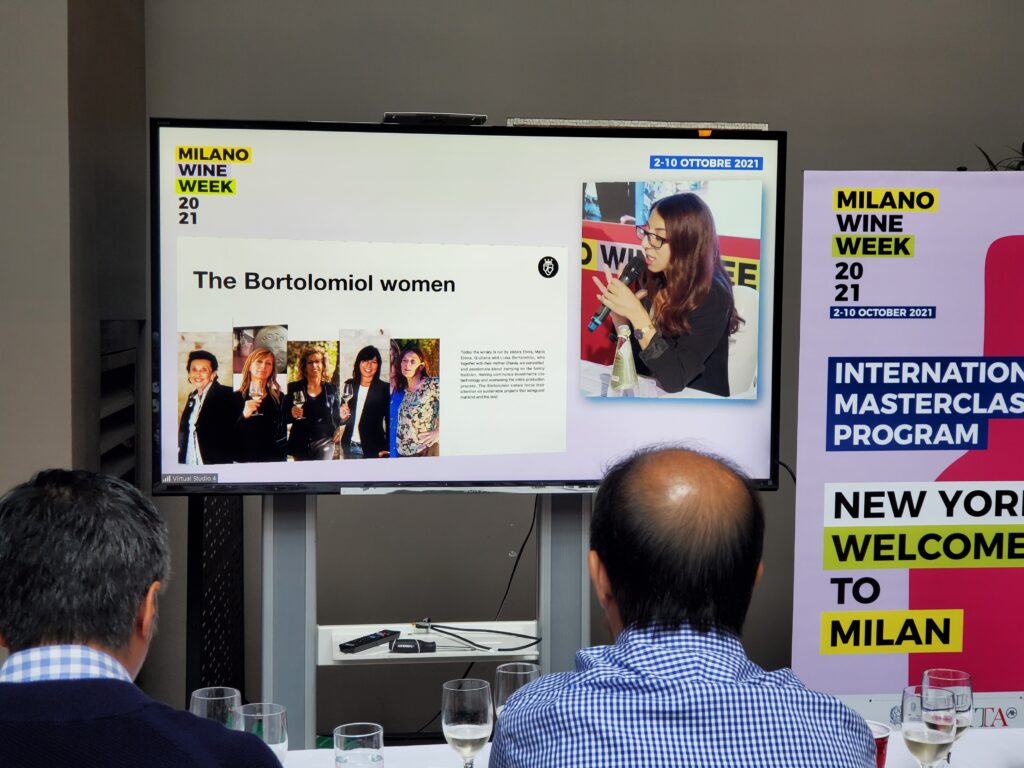
The Bortolomiol women mean business! Today the winery is run by sisters Elvira, Maria, Elena, Giuliana and Luisa Bortolomiol, who together with their mother Ottavia, are committed and passionate about continuing the family tradition. The sisters focus their attention on sustainable projects that safeguard man and the land, making continuous technology investments and overseeing the entire production process. Their Prosecco Superiore DOCG, made from the Glera grape, is aromatic, light and refreshing on the palate, with medium+ acidity and long-lasting bubbles. Would make a wonderful aperitif or accompaniment to appetizers, charcuterie, seafood and vegetarian dishes.
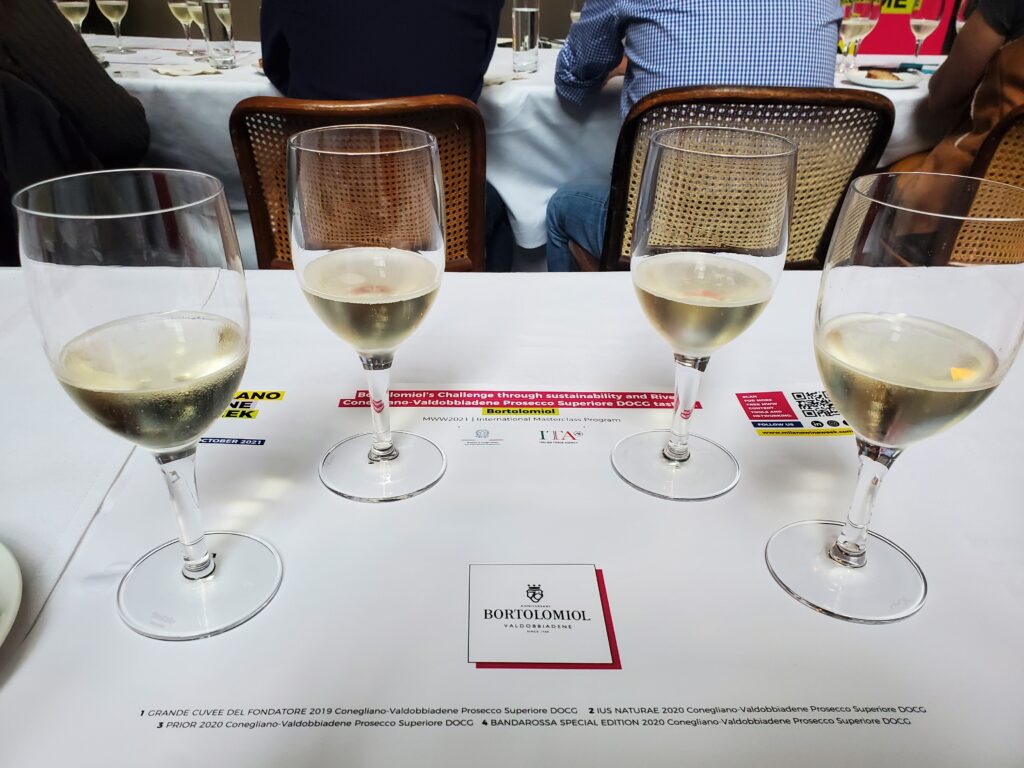
Wednesday, October 6th
Pasqua Vigneti e Cantine
Although I didn’t attend all of Wednesday’s tastings, there were a few standout wines at “Pasqua Vigneti e Cantine,” which featured “the different crus found in the Eastern Valpolicella valleys through the most representative wines from the territory, cultivated using both conventional and organic methods.”
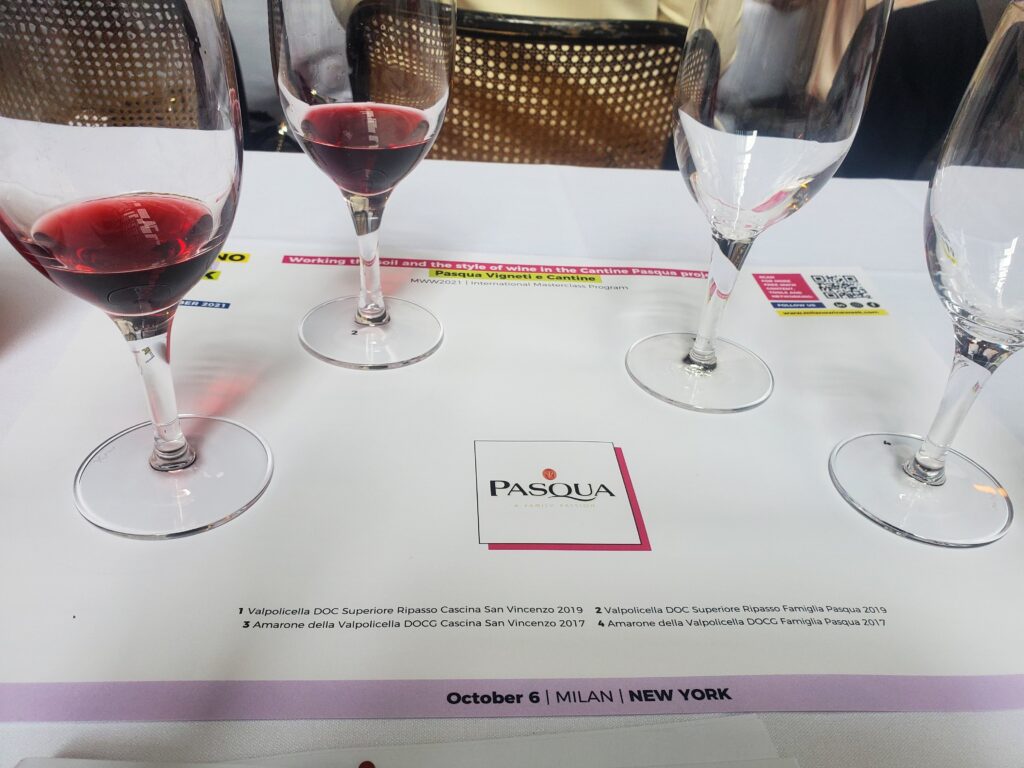
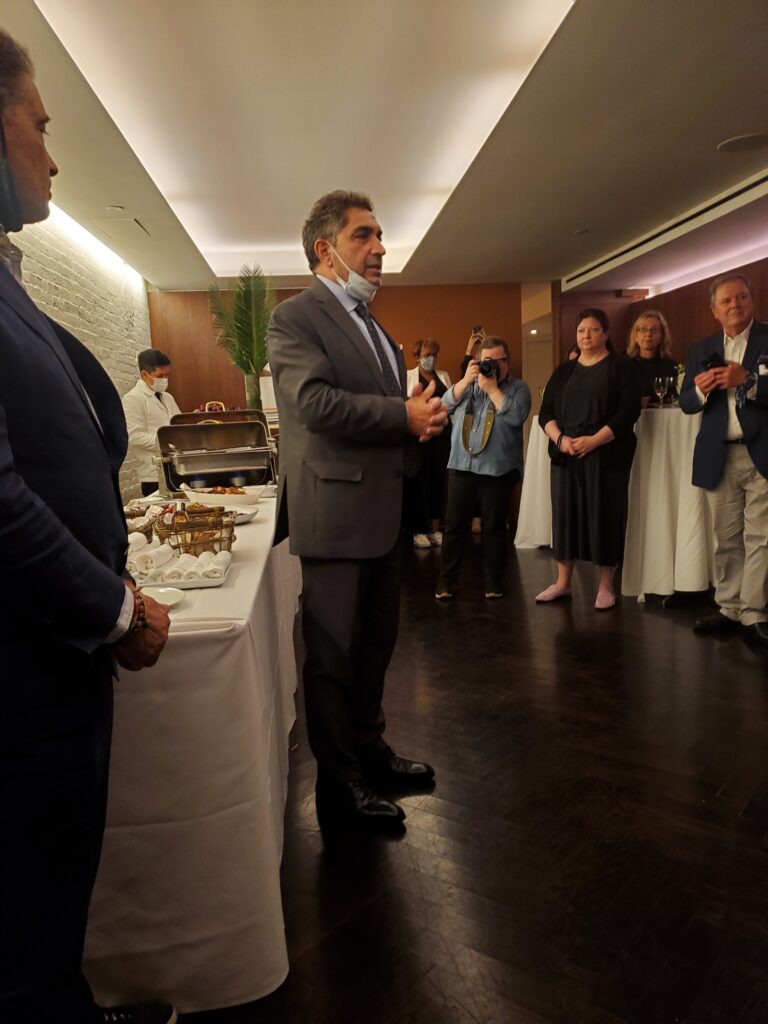
Valdo Sparkling Wines: “Blending Tradition with Innovation since 1926 by Valdo Spumanti”
A highlight of the 3rd day of Milano Wine Week was an evening reception at The Milling Room hosted by Matteo Bolla, Business Development Director for Valdo Prosecco and sparkling wines.
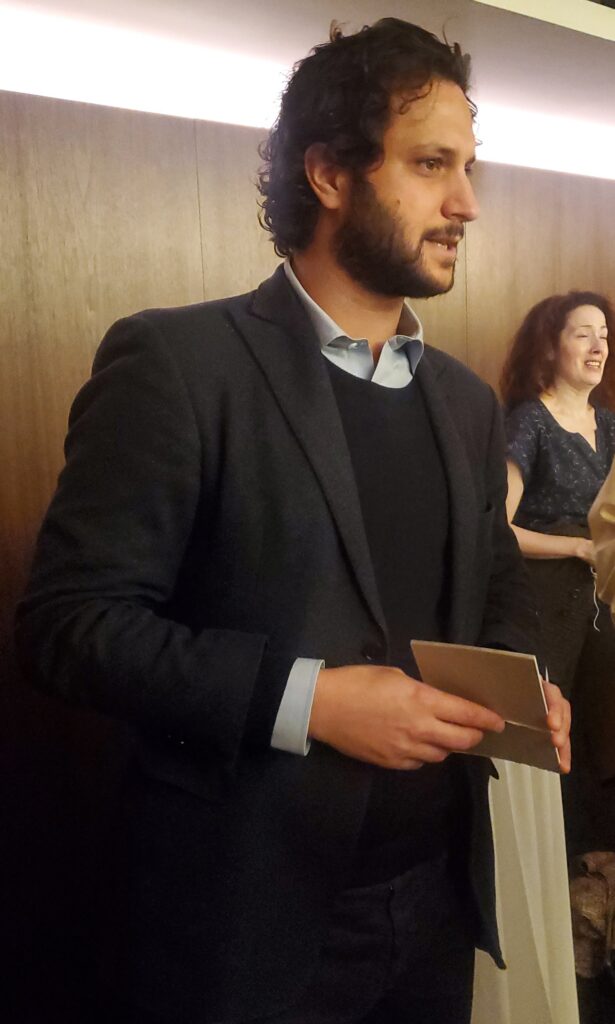
Towards the end of the day at Il Gattapardo, Valdo introduced their Rosé Brut Special Edition, a unique cuveé of Glera from Veneto and Nerello Mascalese from Etna, Sicily. Subsequently, a few of us moved on to The Milling Room on the Upper West Side, where I ran into Shakera Jones of Black Girls Dine Too, along with CharlesSpringfield of The Wine Stylings and several other wine industry folks at a lively reception hosted by Matteo Bolla, Valdo Business Development Director, who shared his recipe for a
“321” Prosecco Cocktail:
3 parts Prosecco
2 parts Elderflower
1 part seltzer
Stir the above ingredients in a pitcher and pour into an ice-filled glass. Garnish with 2 mint leaves & lime for a simple refreshing warm weather cocktail.
Wednesday, October 6th – Valdo’s Evening Reception at The Milling Room
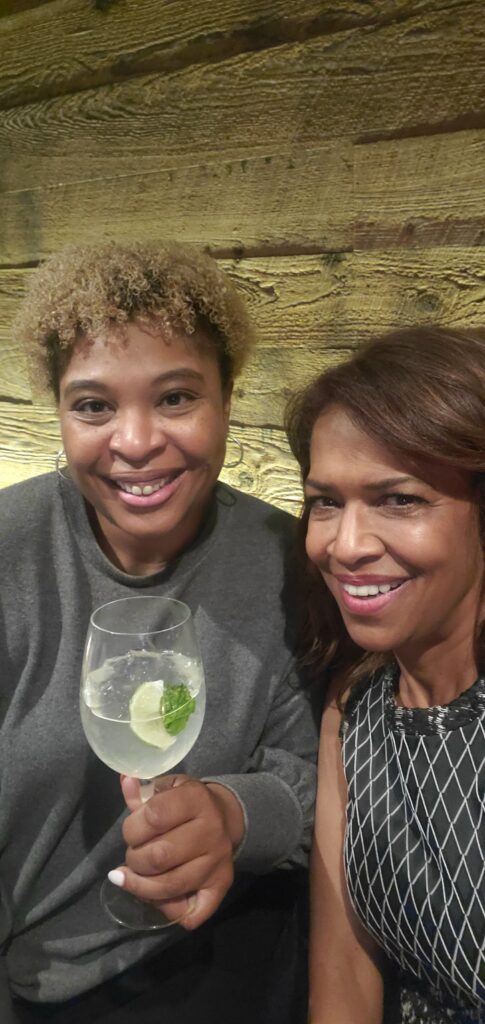
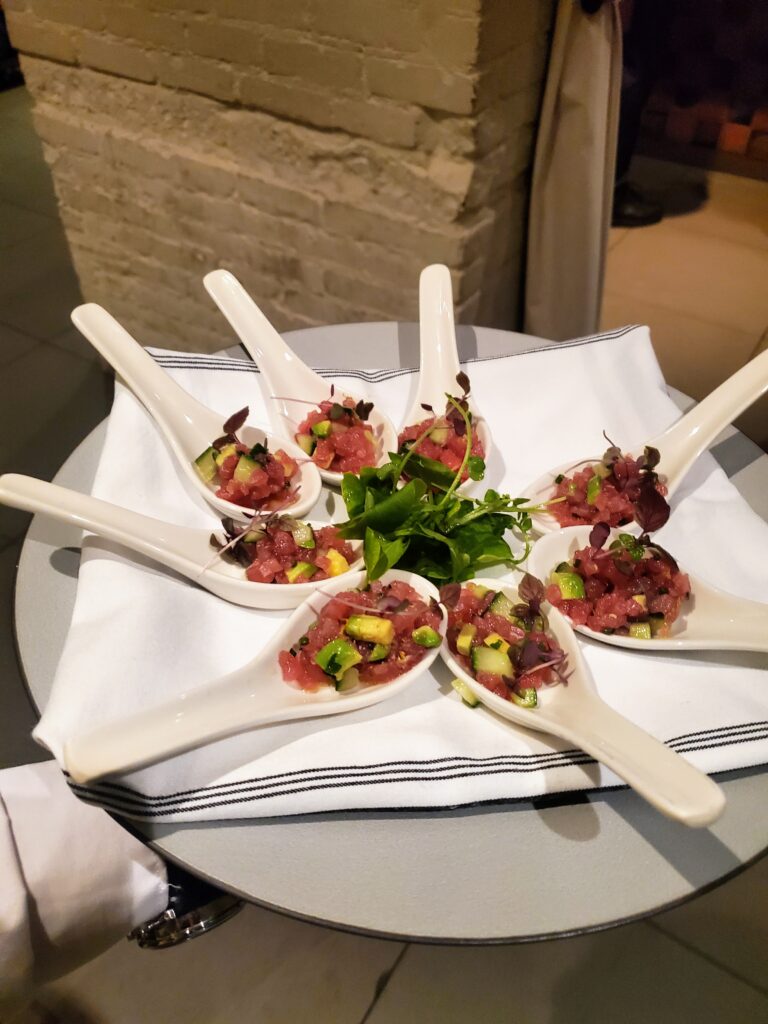

Thursday, October 7th
Discovering Lombardy Regional Specialties
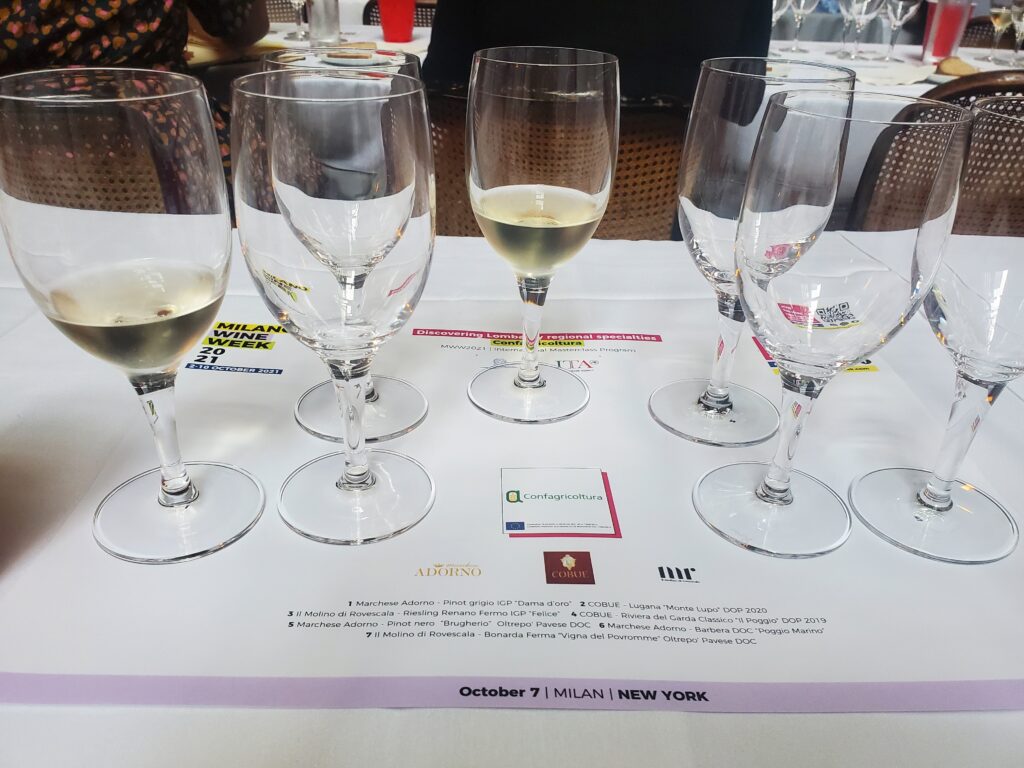
The seminar on wines from Lombardy hosted by Confagricultura was focused on understanding the style and quality of wines from this Italian wine region, north of Milan, which is most famous for its sparkling wines. Still red, white and rosé wines are also made in this cool-climate region with influences from the Swiss Alps and Po River. A few of my picks from this tasting were as follows:
#3 – Il Molina di Rovescala Riesling is distinctive – petrol, sulfur, mineral, mandarin, lemon citrus on the nose, peaches, long clean finish medium acidity. Grows in an area with peach trees. Good pairing with spicy foods, curry for example. 30 year old vines
#4 – Rivera del Garda Classico “IL Poggio” – reticent earthy nose, mild color, savory palate, delicate red fruits, gentle tannins,
#5 – 2019 Pinot Nero – Ruby red color, red fruits, strawberries, cherries, spices from wood tannins, Pair with truffles. Good quality-to-price-ratio.
#6 – Marches Adorno Barbera “Poggio Marino” – Deep garnet color, earthy reticent nose, black cherry fruit, stainless steel and oak fermented?
#7 – Il Molino de Rovescala Bonarda “Vigne del Povromme” – Purple glass-staining color “Will gain more and more spice” International markets. High alcohol level. Ready for drinking, good with meats. Very fruity notes. Late Harvest mid-October. Acidity is very high. 60 year old vines.
According to the presenters, they’re “still experimenting with the 2019 vintage to understand the duration” of wines from Lombardy. [These are] “ripe grapes but not tired grapes.” The region produces a variety of wines. None of the vines are under 25 years.
Consorzio del Vino Brunello di Montalcino
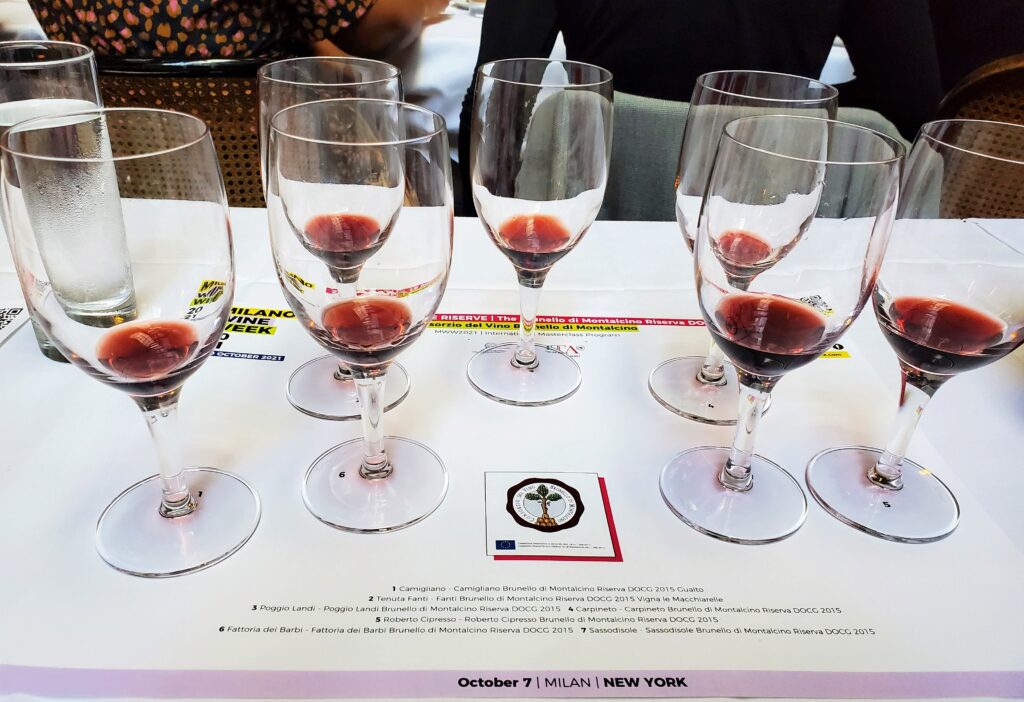
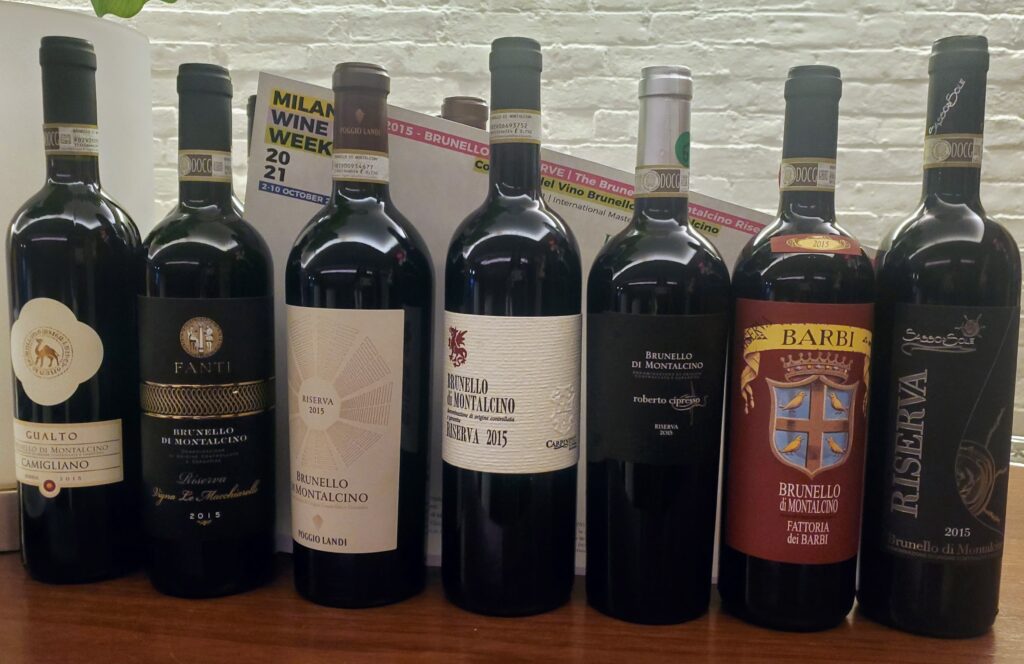
Coming full circle from the first day of Milano Wine Week tasting Chianti Classico made from Sangiovese grown in the Chianti region of Italy and wrapping up on the last day with Brunello di Montalcino made from some of the best Sangiovese grapes grown on some of the best plots of land in Tuscany seemed like a smart way to end Milano Wine Week 2021.
“Brunello di Montalcino is a square.” The area is 3500 hectares. Soil is sand in lower regions, clay and silt as you get higher. The specific region of Montalcino is an inactive volcano which lends smoky, earthy characteristics to the soil. Black and white truffles grow in the eastern portion of Montalcino. In 1865, the first official bottle of Brunello di Montalcino was made by Biondi-Santi.
A few tasting notes:
1. Camigliano Reserva DOCG 2015 Gualto
Masculine but lean, not muscular, transparent. The brighter the color the more acidic the wine will be
This wine comes from the Southwest region of Montalcino. More intellectual and sexy, rather than muscular. All about red fruits, dry herbs and gunpoint (minerality).
2. Fanti Riserva DOCG 2015 Vigna le Macchiarelle- 4,000 bottles, clay, limestone, The east side of Montalcino is darker. Dark ruby brick red color, dark fruit, leathery, balsamic, prunes, high alcohol, sweet flavor.
3. Poggio Landi – Northeast, modern cellar. 4 years in barrel. “Kansas City barbecue style.” Closed, apparent mouth-drying oak, requires work.
4. Carpineto – High altitude, 500 meters above sea level Northwest. Spent 42 months in large Slovenian oak barrels. Aromas of provencal herbs. Flavor is juicy not jammy, the citrus acidity & linearity portends ageability. The grapes have 5.9, 6.1, 6.2 grams/ liter acidity “which is like the acidity level for white wine.”
5. Roberto Cipresso – Black ink-driven color. I didn’t really find this wine to be very memorable in aromas and flavors.
6. Fattoria dei Barbi – 66 hectares out of 300 hectares. Ruby red garnet, cola, red berries, tobacco leaf, violet, vanilla stick, on the palate alcohol, black pepper, cinnamon, Mediterranean herbs. Southeast location. Southern heat contributes to the alcohol. Ancient Winery with classic winemaking style yet open minded.
What about Riserva wines? What does the term “Riserva” really mean in Tuscany? Are Riserva wines more ageworthy? Absolutely! Riserva means ‘superior quality,’ and this quality can be determined by several factors that make the wines more suitable for being aged. For instance, location matters. Typically wines that get designated as Riserva wines are made from grapes grown on tougher soils on northern sites that get cold nights and warm days from the direct sunlight. Yields per plant tell you about concentration of fruit flavor and tannins – lower yields tend to produce more concentrated, powerful wines. This is why vintage really matters in important European wine regions, because climate and weather conditions, which vary from year to year, can impact the quality of wine.
Is Sangiovese the soul of Tuscany? I tend to believe so, and it may even be the soul of all of Italy.
